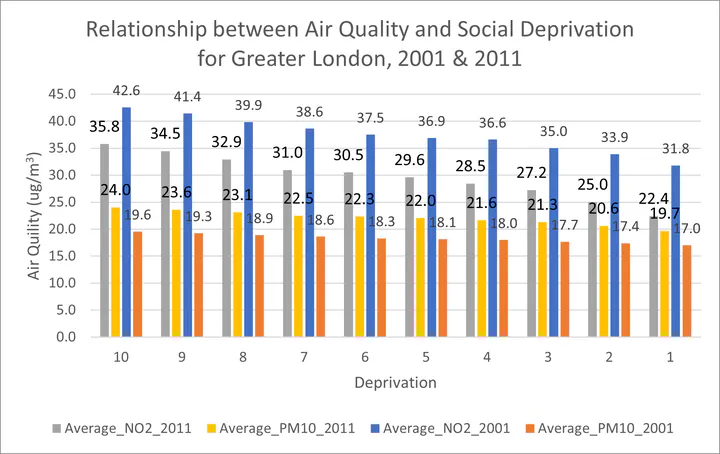Environmental Justice in London: Analyzing a Decade of Air Quality Inequality

This project investigated whether the burden of air pollution in London is shared equally across society, and how that distribution changed between 2001 and 2011. By integrating air quality data (NO2 and PM10) with social deprivation indices in a GIS environment, I analyzed the population-weighted pollution exposure for different community groups. The goal was to provide quantitative evidence on the state of environmental justice in the city.
My analysis revealed a persistent and worsening inequality. In both years, the most deprived communities were exposed to significantly higher levels of pollution. Critically, while city-wide air quality improved, the benefits were not shared equally. The least deprived areas saw a 29.6% reduction in NO2 pollution, nearly double the 16% reduction experienced in the most deprived areas.
This widening gap demonstrates that broad environmental policies can inadvertently deepen social inequity. The project concludes that a “one-size-fits-all” approach is insufficient. To achieve true environmental justice, policies must be specifically targeted to prioritize air quality improvements in the most vulnerable and historically overburdened communities.